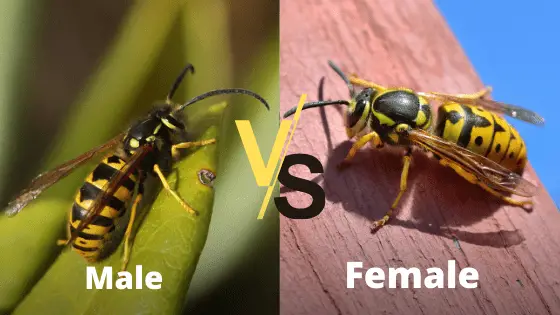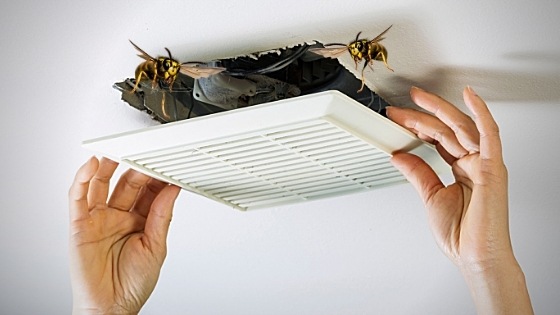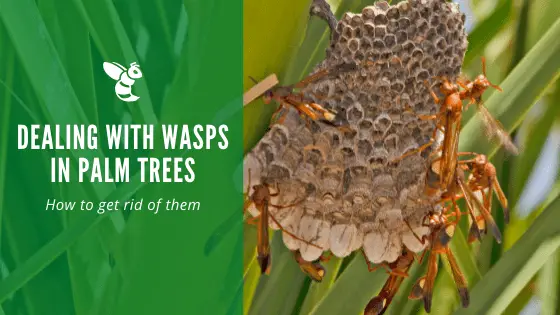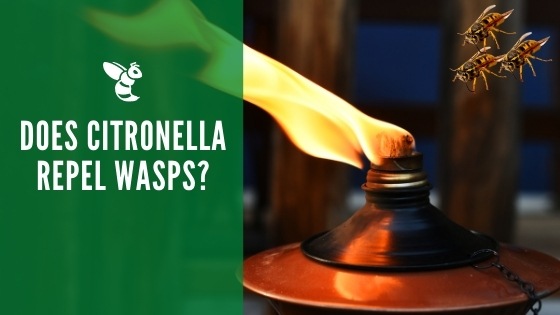Male vs Female Wasp: What’s the Difference?

Whether you have a wasp problem on your property or you’re simply interested in learning more about wasps, there are a few different ways that you can tell the difference between a male and female wasp.
If you’re observing wasps on your own, make sure you’re taking necessary safety precautions so you don’t get stung. At first glance, you’ll likely see their difference in size. Females are larger than male wasps because of their ability to carry eggs. They have a larger and fuller abdomen area. Let’s go through the other key differences.
Do Male Wasps Sting?
If you’ve come into contact with a male wasp, then you’re in luck. Male wasps do not sting. The female wasp is the gender that has the ovipositor, this is the body part that contains the stinger.
Because the wasp stinger on the female does not have barbs, the female wasp can sting repeatedly and injecting venom into their prey. Interestingly, the stinger on the female wasp also functions as a sex organ.
Do Male Wasps Leave the Nest?
Behavior is another way that you can tell the difference between a male wasp and a female wasp. Females will remain closer to the nest because of the built-in weapon on their body (the stinger) used to protect the nest against any potential intruders.
Do Female Wasps Kill Male Wasps?
The female wasp can be a pretty nasty and deadly insect. She uses the male wasps to reproduce and expand her colony, but she doesn’t show a lot of loyalty to the other gender. Certain female wasps have been known to stuff a male wasp inside a nest cell to keep them from consuming the female’s food just brought back to the larvae.
After working hard to secure food, the female takes great offense to a male potentially trying to reap the benefits of her work. She can keep the male in the cell for several minutes, physically pressing down on the male’s body to keep them in place while she threatens to sting them.
Females can also become aggressive if they feel that the males threaten their food source at any point in time, and this behavior shows the strength of the female wasp. Females consume more food because of their ability to reproduce, so they don’t mess around when it comes to their next meal.
Do Male or Female Wasps Build Nests?
The female wasp will build the nest in the springtime when she is looking to start her new colony. She has abandoned last year’s nest because of the elements, and the female wasp has likely found a safe place to hibernate for the winter.
When the temperatures rise in the spring months, this begins the process of creating cellulose from nearby trees to form a new nest. There is also the potential for very dominant female wasps to take over another female’s nest that doesn’t defend her territory properly.
You can also count the number of segments on a wasp’s antennae if you’re inspecting a dead wasp that isn’t wriggling around. Male wasps will have thirteen different antennae segments, while females have twelve segments on their antennae. Unfortunately, male wasps don’t perform a ton of duties for the colony.
Much of the daily maintenance of a wasp nest is done by the females. However, you will see the males contribute to defending the nest when the females aren’t around. Males rarely have aggressive behavior due to not being able to sting the person or thing that they find to be threatening.
Conclusion
Wasps can function as both solitary and social, depending on what species you’re dealing with. The type of behavior you see from males versus females will largely depend on what kind of wasp and wasp colony you’ve come across.
Wasps are a beneficial insect on your property if you can find a way to coexist with them. If their nest is somewhere that doesn’t pose a threat, you should think about just leaving it where it is and monitoring the situation.
If they build their nest in a highly trafficked area where you fear that someone will get stung by the aggressive females, it might be time to call in a professional that can help you get rid of the wasps in a safe manner.
You can use both natural and conventional methods to take care of wasps yourself, but you must do your research ahead of time, so you know what you’re doing. You don’t want to put yourself or anyone else in danger during removal.




